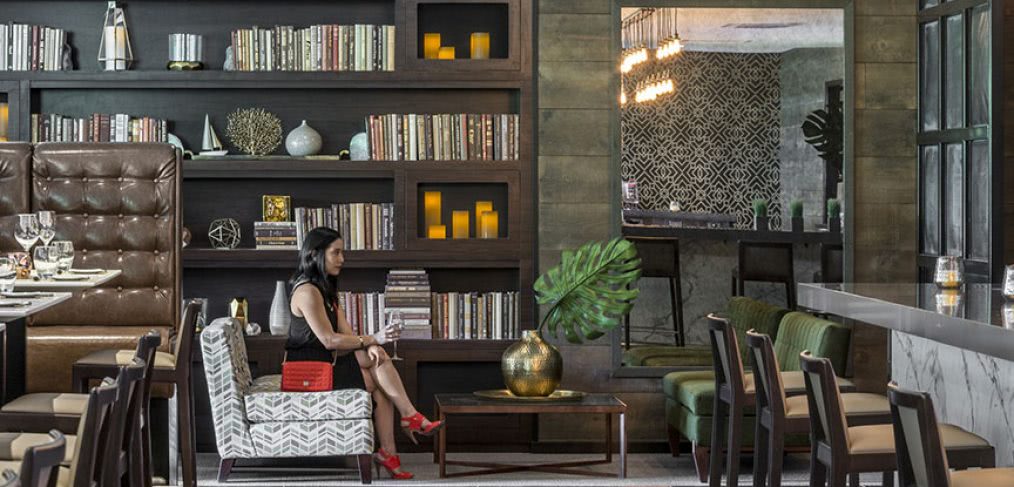
There and Back Again: Finding Harmony Between Branding and Design
Hospitality design requires differentiation in both branding and design in order to be successful, says CallisonRTKL’s Kevin Ketschek.
Some of my purist design friends thought I was crazy when I left a past job at an interior design firm to work for a hospitality brand. This, they said, was the equivalent of selling out; my creativity and passion for design would surely dissipate amidst the humdrum corporate climate.
They were wrong.
In fact, in my role as design leader and brand steward for one of the “Big Five” in the hospitality industry, I found fresh inspiration daily via exposure to so many different architects, designers, artists, manufacturers, hotel owners, executives, general managers and others. The new skills and perspective I acquired in my work with them are invaluable to me today, especially as I embark on a new chapter in my career with CallisonRTKL.
So, to those naysayers—no hard feelings! Here are a few of the key takeaways from my journey from design to brand and back again.
The Millennial in Us All
We’re seeing a ton of brands adapt their strategy to target the millennial generation, but there’s more to the story than flat pack furniture and superior social media prowess. When it comes down to it, everyone likes affordability and value, older generation travelers are still a powerful force in the market, and the preferences of the target audience are constantly evolving. What this tells us is that, prior to any sort of conceptual design, it’s vital for the design team to build a comprehensive understanding of the latest brand standards and current brand strategy. Brands competing in a dense market are revamping their playbooks to appeal to new audiences—particularly the curious traveler—and some are undergoing a complete reinvention to ensure survival. With ever-shrinking project schedules and iron clad budgets, there is little room for tolerance on the part of ownership for redesign and there will be compromises to be made in order to stay within schedule, scope and budget, so heed my warning—do your homework!
Differentiate: What Kind of Brand Are You?
All brands were not created equal, so don’t design them like they are. Designers who understand the difference between core brands, lifestyle brands, luxury, approachable luxury, ultra-luxury and everything in between are in high demand. A core brand that caters to the road warrior business traveler will be markedly different from the lifestyle hotel tailored to the free-spirited traveler interested in exploring a new culture and locale while getting some work done in the process.
Interior Design 101 dictates the need for a deep understanding of who the end-user is and what they are hoping to experience and accomplish in the space. Apply this basic principle to brand design, and you will be surprised how this simple logic makes complex projects start to click. There are several lifestyle brands that do this well—Virgin Hotels, Renaissance, W Hotels, Citizen M and Moxy—but when it comes to branding and a laser-like focus on the end-user’s needs, it’s also worth taking a look at the buzzworthy Yotel. In the words of Hubert Viriot, founder and CEO, “Yotel offers everything our guests need but nothing they don’t need.” Instead of focusing on expressive interiors, Yotel’s prefab guest rooms set out to meet a traveler’s every need in the most efficient way possible. It’s not just about visually arresting spaces; there is a brand-specific experience to be had.
Custom Reigns Supreme
That said, while Yotel’s consistent look serves its target audience well, no longer is brand uniformity the primary mark of success—in many hotels, the bar has been raised, and custom reigns supreme. Site-specific, locally-inspired and forward-thinking is the battle cry of today’s hotel guest. Armed with a plethora of technology, they are more design savvy, food savvy and globally aware than ever before, and catering to that awareness means tailoring the design to the locale. Take the luxury brand Aman Resorts—every property feels as though the guest has been transported, offering an immersive experience. With properties in New Orleans, LA, New York, London, Palm Springs and more, Ace Hotel, while not a legacy hotelier, is another brand winning the customization game. Creative opportunity is knocking, and those with the passion and talent to constantly master and reinvent are poised to excel in today’s world of brand design. Think about how many different brands are out there, and multiply it a thousand times over—that’s how many creative opportunities exist to merge design and branding in a new and exciting way.
It’s a great time to be a hospitality designer, and I am very happy to be back in the creative driver’s seat.
